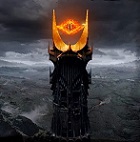Turns 36-37: 19 February – 4 March 1942
The final weeks of February saw both armies trade limited blows in a few sectors but across most of the front major operations ceased. However, two sectors saw substantial fighting.
The period from 20-25 February saw a major offensive by the Volkhov front in an attempt to cut the German supply lines to Gomel. When it was clear the German defences were too strong this was abandoned in early March.
In the north Stavka decided to try to improve its positions with the plan of a summer attack to liberate Leningrad.

(Soviet artillery in action on 33 Army sector)
For the last 3 weeks this sector had been subjected to a major campaign by the U2s flying night harrassment missions and the end of February saw a massive Soviet offensive against the Finns. Having recaptured Kobona the previous week, 33 Army struck at the Finns driving them back.
With their flanks disrupted, the 7th Finnish Division was then forced to fall back giving the Soviets a substantial bridgehead over the Volkhov and able to repair the train lines to enable a build up for a later offensive.

Fighting in the north was to carry on for the next few weeks but 4 March should be seen as the natural end to the Soviet winter offensive. In places Stavka reluctantly ordered over-exposed formations to pull back and elite formations were placed into reserve and their place in the front line taken by units that had seen little combat in winter.
Fierce debates raged in the highest echelons of the Soviet command as to the threat the Germans still posed, where they might attack and how best to re-organise the Soviet forces for the summer battles.
OOB
At the end of winter, the respective strength of the main armies was;

Slowly the Red Army was not just growing in size, and adding a number of formations awarded Guards status as a result of their prowess on the battlefield[1], it was modernising.
It now deployed over 6,300 tanks. Of these, 1430 were light tanks, 1630 medium tanks and 700 heavy tanks. The balance were a collection of pre-war BT and T-26 style AFVs assigned to infantry and cavalry support roles.

The bulk of the armour was still based on pre-war models, but slowly production of T-34s, KV-1s and T-60s was improving and some lend-lease armour was proving to be valuable.
The VVS had managed to replace most of the pre-war planes. The 2,700 fighters and fighter-bombers were mostly Yak-1s and LaGG-3s. US and British lend lease planes were starting to prove their worth. The bombers were still mostly pre-war level bombers as production of Il-2s had been badly disrupted in 1941. In addition, the number of reconnaissance and transport planes was slowly increasing.

(should note that about 200 of the Migs are actually bombers as are about 100 of the LaGG and Hurricanes).

(Lend-lease Hurricane)
[2]
Casualties
The offensive had exceeded initial Soviet expectations in terms of the amount of ground retaken. Cities such as Smolensk, Bryansk and Dnepropetrovsk were back under Soviet control. Equally the threat to major industrial centres in the Dombas, at Kharkov and to Moscow itself had been reduced.
Although the Germans had opted to remove their armoured formations from the front line, they, and their allies had suffered substantial damage in the 4 months of sustained fighting.
Total losses

German losses:

I've indicated the lines where German losses have been particularly heavy. No real idea as to the importance of any of those but the battering of their cavalry fits the pattern of fighting. They've also lost a lot of support squads but I presume those can be easily made up from Hiwis.
Finnish losses:

I've been deliberately targeting the Finns as my logic is even if I lost the battle badly of all the axis nations they are the one least able to replace their losses.
No real point reporting Italian or Hungarian losses as they were relatively untouched by the fighting.
Romanian losses:

Think I've done a good job on battering the Romanians, I can't see them contributing very much to the axis 1942 offensive.
Slovakian losses:

While a very minor part of their forces, these took the brunt of my offensive around Kursk.
Soviet losses:

I've not shown all the lines for the Soviets. Its re-assuring to see that the bulk of my 3,000 tank losses were in T-26. T-38 and BT-7 models that are obsolete. Like the Germans my cavalry has taken a huge battering but I think my ability to recover those losses is much more substantial.
[1] – latest round of Gds

[2] – note for all these numbers, these are the planes deployed on map. The reserve is stuffed full of pre-war rubbish and most I'll let the auto-upgrade routine swap over as Yak-7Bs and La-5s become available in the summer.

















































